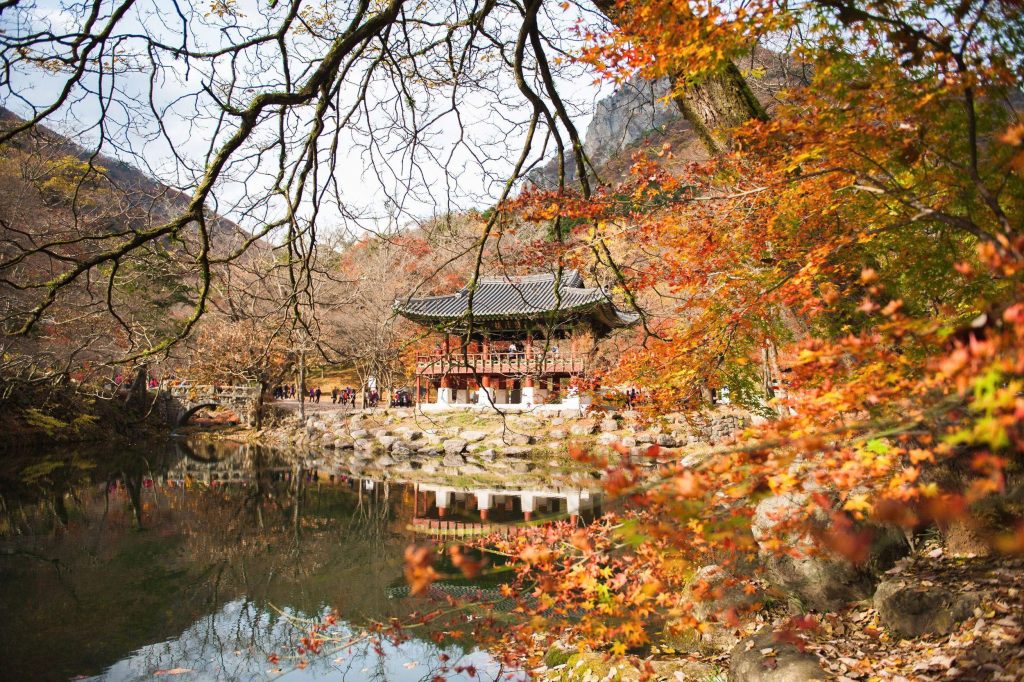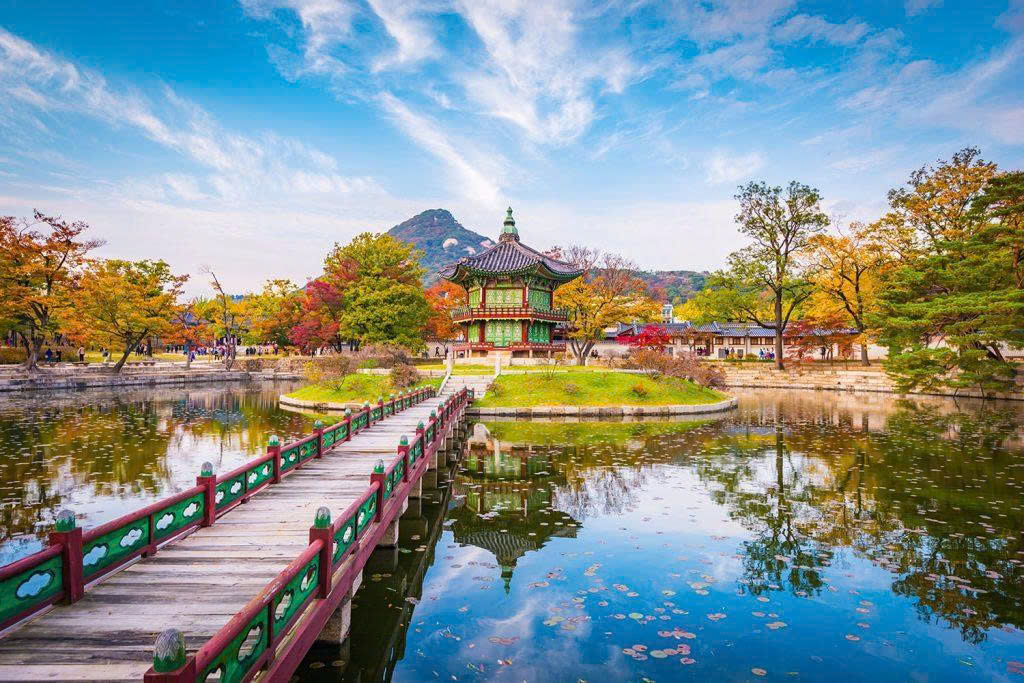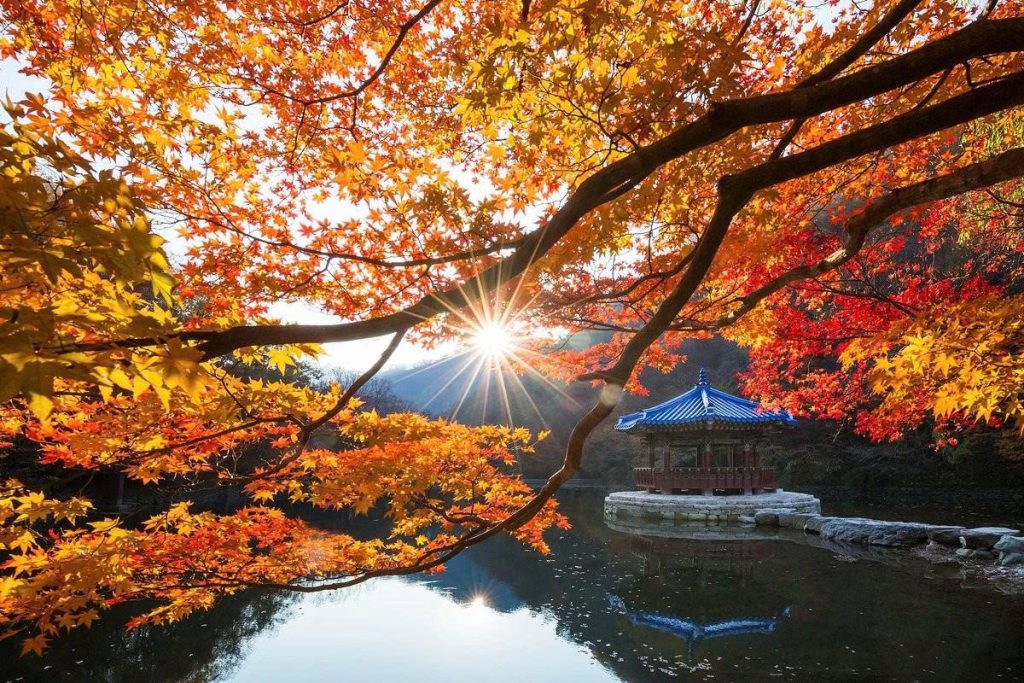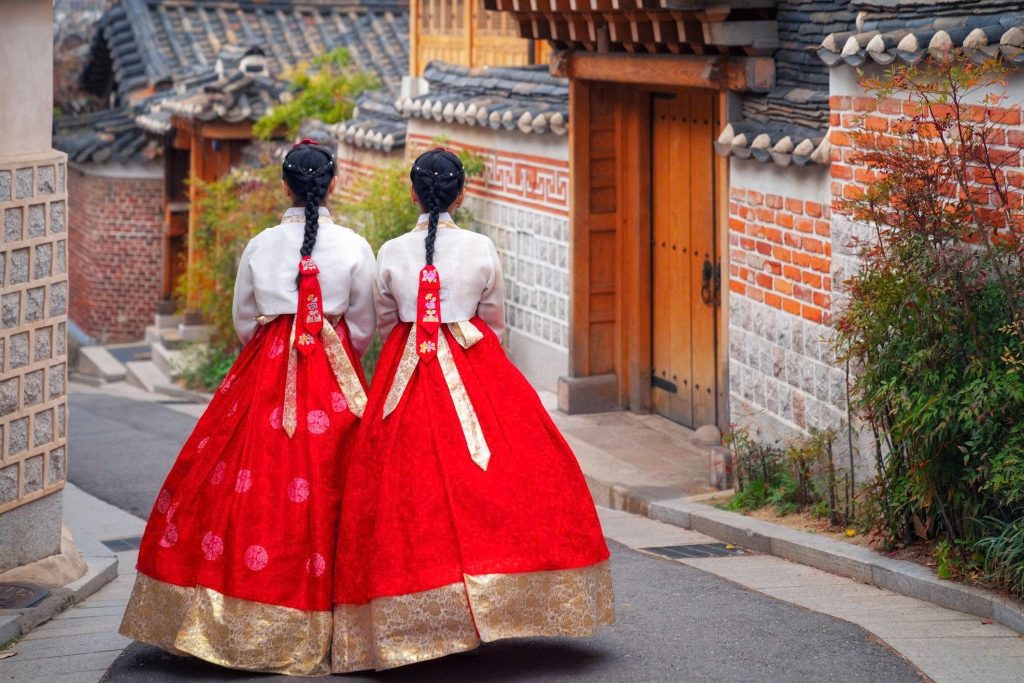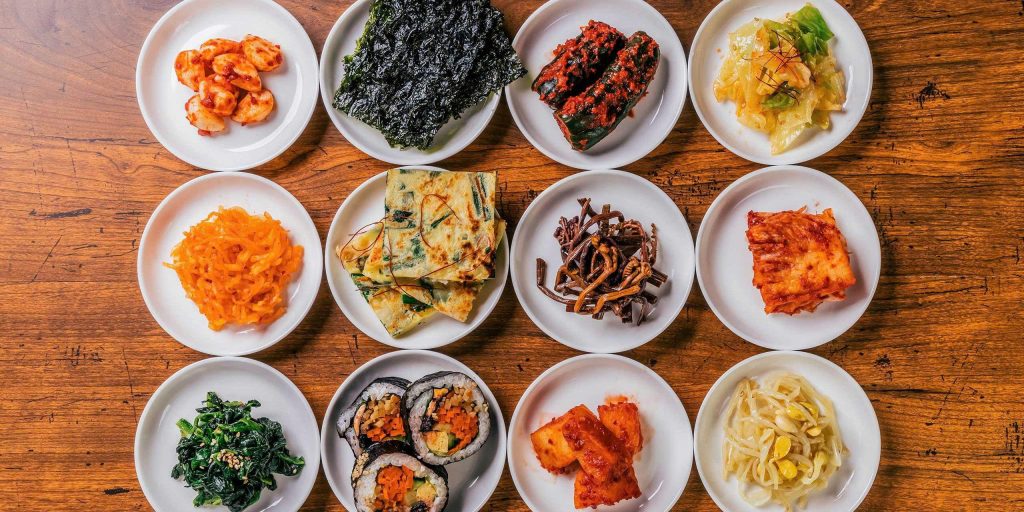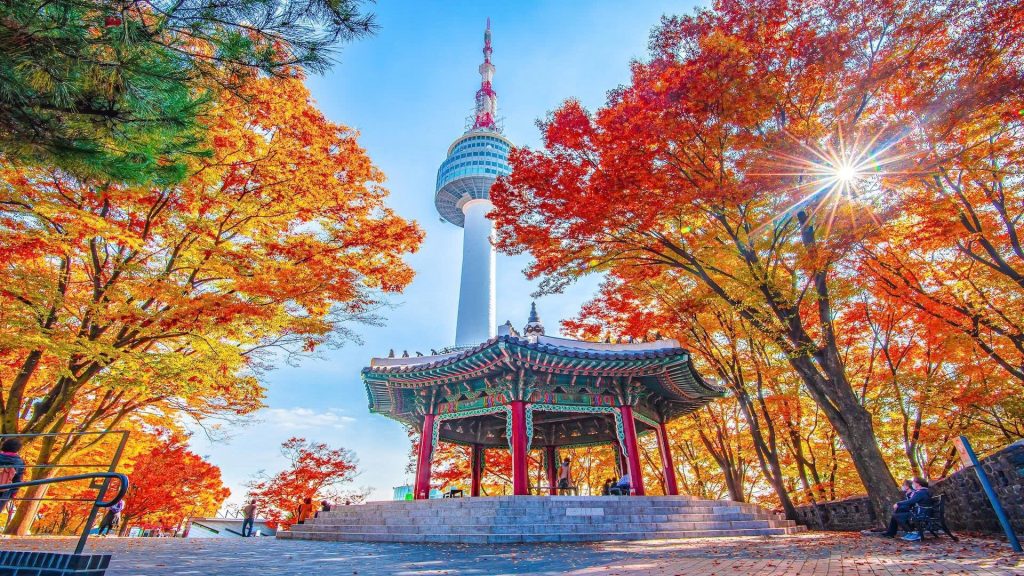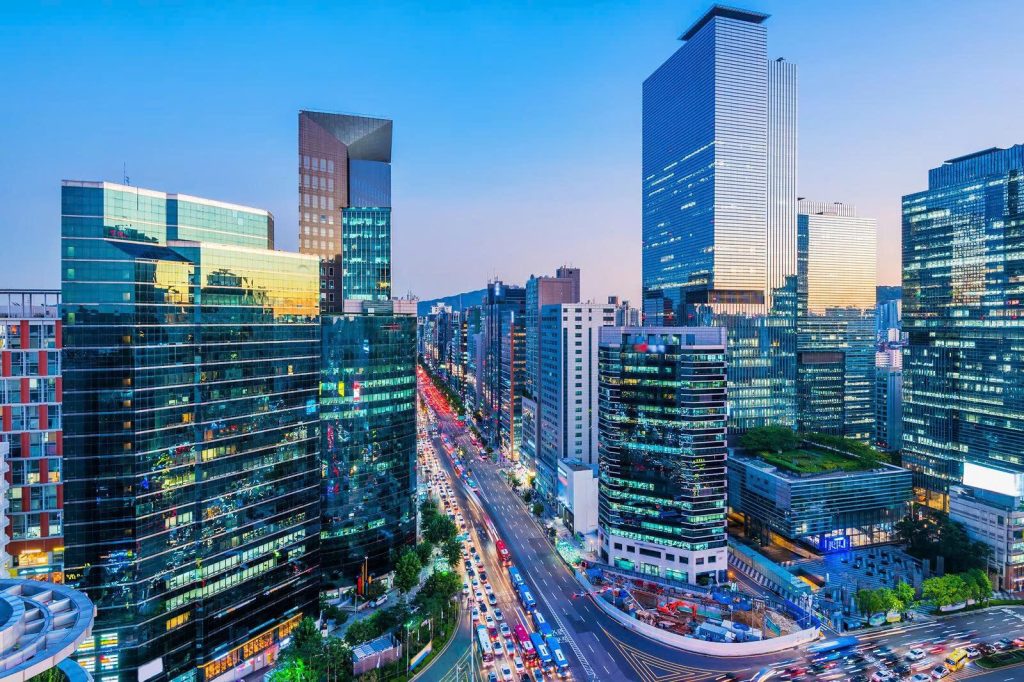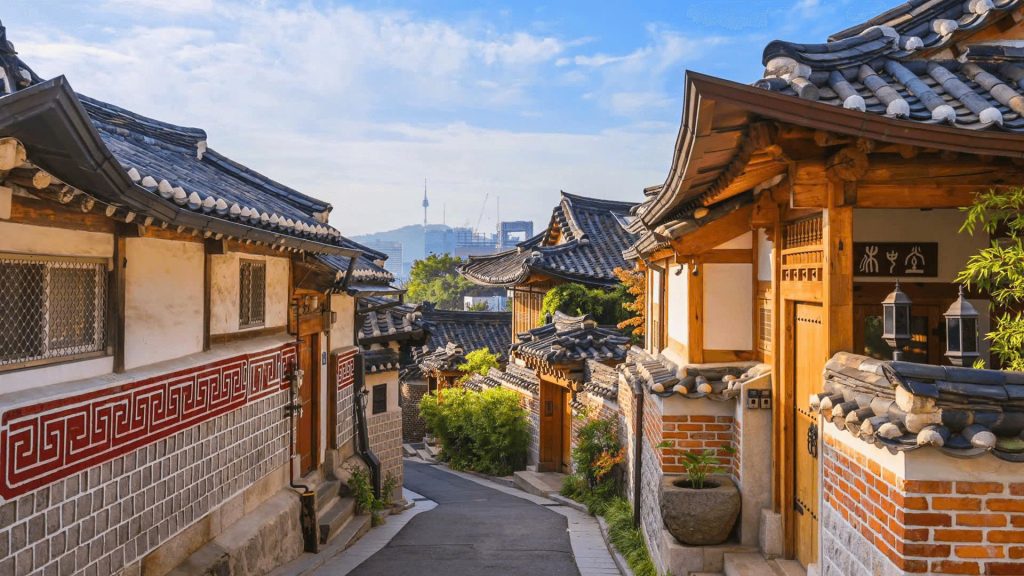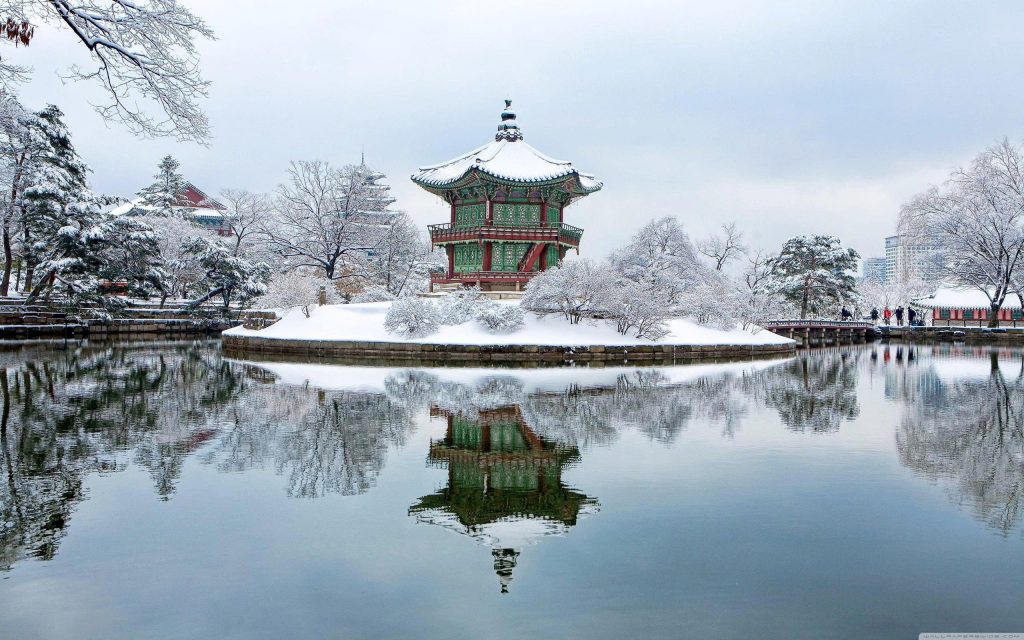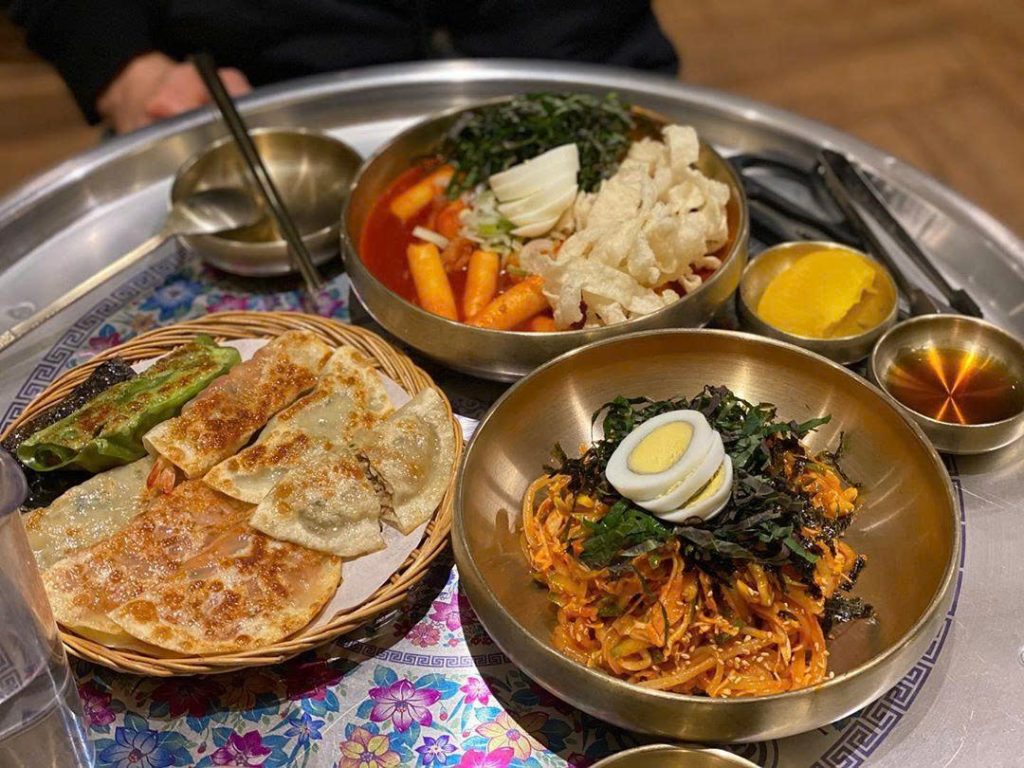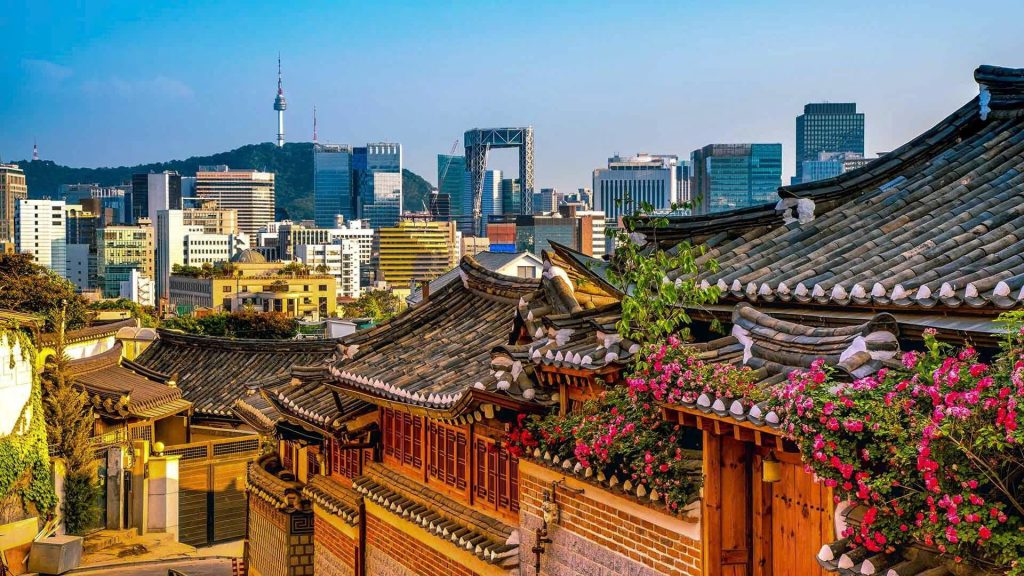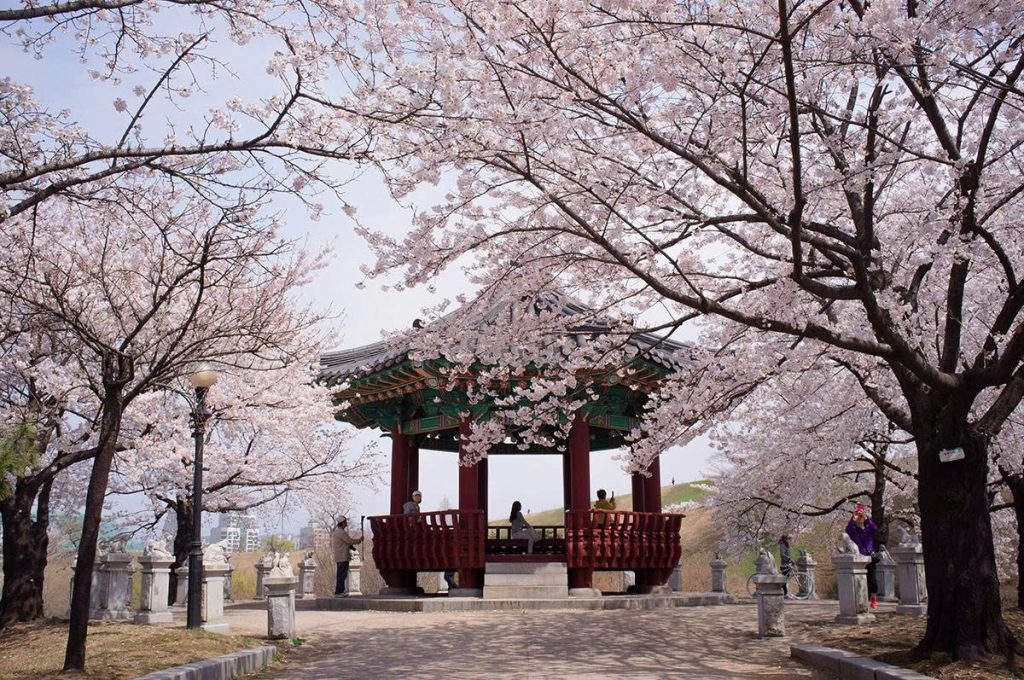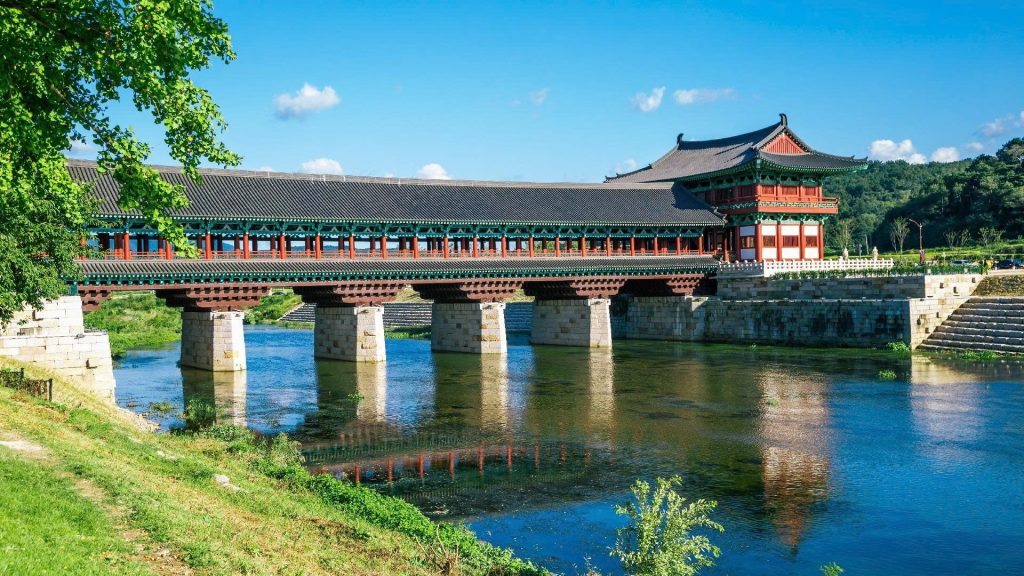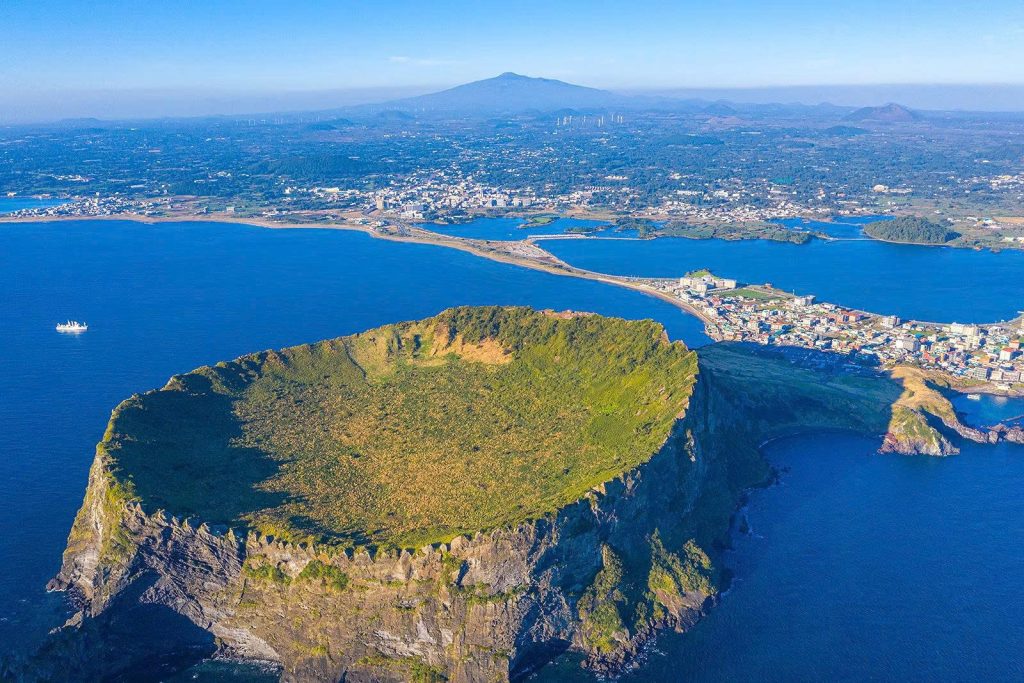South Korea is a land of dramatic contrasts, where the neon glow of futuristic cityscapes coexists harmoniously with the tranquil beauty of ancient palaces and fog-shrouded mountains. It’s a country that seamlessly marries the past with the hyper-modern, offering travelers a vibrant tapestry of K-Pop culture, deep history from the Joseon Dynasty, incredible cuisine, and stunning natural wonders.
In this article, we’ll explore the Top 15 must-visit destinations in South Korea, organized by region and theme, ensuring your trip meets all the latest Google Quality Guidelines for helpful, authoritative, and trustworthy travel advice. Get ready to explore a country that truly deserves a spot at the top of your travel list.
The Metropolitan Core – Seoul & Gyeonggi-do
The capital region is the economic, cultural, and political heartbeat of South Korea. It’s the place where the country’s 600-year history is on display next to its hyper-modern technological prowess.
1. Seoul: The Dynamic Heart of South Korea
Seoul, a sprawling metropolis of over 10 million people, is often the starting point—and the main event—for any trip to South Korea. It perfectly captures the country’s dual identity.
Gyeongbokgung Palace & The Five Grand Palaces
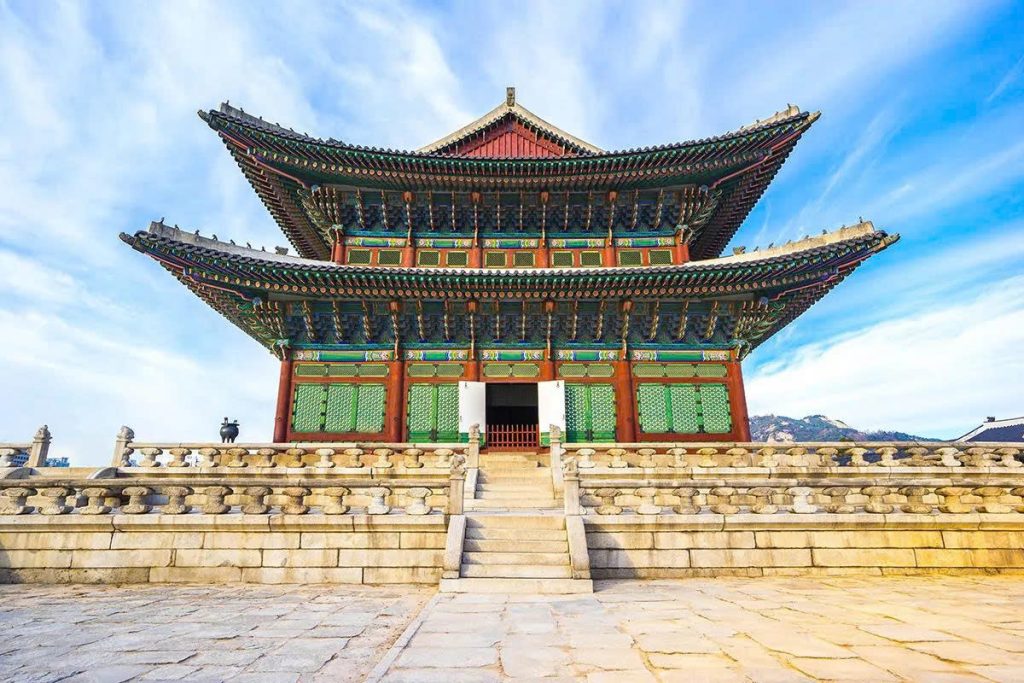
As the largest and most prominent of the Five Grand Palaces built by the Joseon Dynasty, Gyeongbokgung is the most important historical icon in the city. Its sprawling grounds, beautiful gates, and meticulously restored halls offer a powerful glimpse into Korea’s royal past.
- Experiencing the Royal Guard Changing Ceremony: This free, elaborate ceremony takes place daily at the main Gwanghwamun gate and is a spectacular demonstration of traditional Korean military history. Plan to arrive 15 minutes early (typically 10:00 AM and 2:00 PM) for the best view.
- Tips for the Hanbok Rental Experience: Tourists wearing the traditional Korean dress, Hanbok, are granted free entry to the palaces. Renting one is a highly recommended way to immerse yourself in the historical atmosphere and capture incredible photos. Many rental shops are located near the palace entrances.
Bukchon Hanok Village
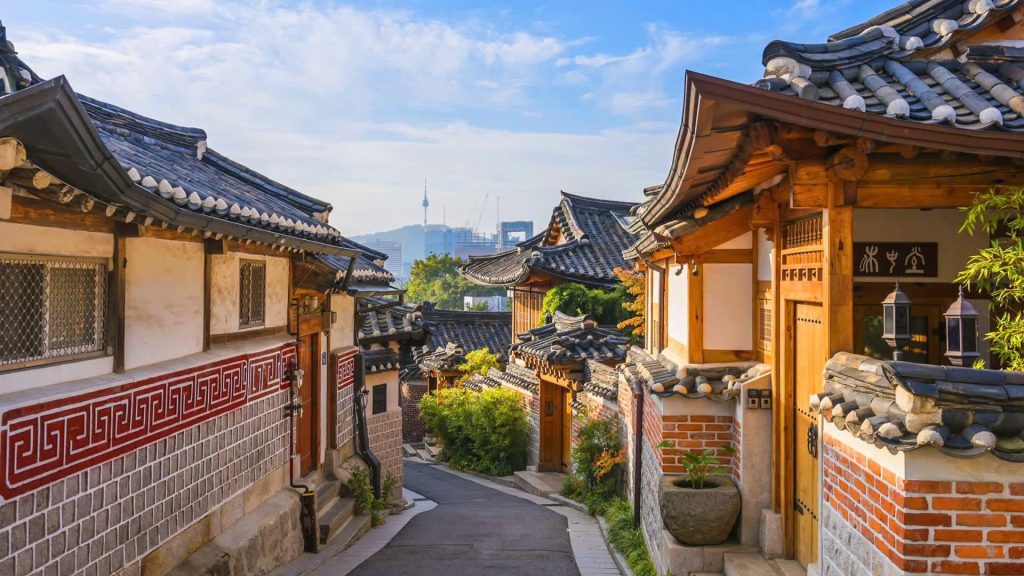
Tucked between Gyeongbokgung and Changdeokgung Palace, this neighborhood is a preserved residential area with hundreds of traditional Korean homes (Hanok). Unlike the reconstructed folk villages, Bukchon is a living museum where residents still live today.
- The Eight Scenic Views and Photography Guidelines: The village is famous for the “Bukchon 8景” (Eight Scenic Views), offering stunning panoramas of the Hanoks and the modern city skyline. Remember to respect the residents by being quiet and refraining from trespassing.
Myeongdong & Namdaemun Market
These neighboring districts offer two extremes of Seoul’s retail culture. Myeongdong is the capital of K-Beauty, fashion, and international brands, known for its vibrant street food stalls opening after sunset. Namdaemun Market is the oldest and largest traditional market in Korea, specializing in wholesale goods, affordable clothing, and housewares.
- A Must-Try Street Food Checklist: Use your Experience to guide your tastebuds: try the spiral-cut potato sticks, savory Hotteok (sweet pancakes), and spicy Tteokbokki (rice cakes in chili sauce).
- K-Beauty Shopping Strategy: Myeongdong is a fierce battleground for cosmetic brands; look for the “1+1” (buy one, get one free) deals that are ubiquitous here.
N Seoul Tower (Namsan Tower)
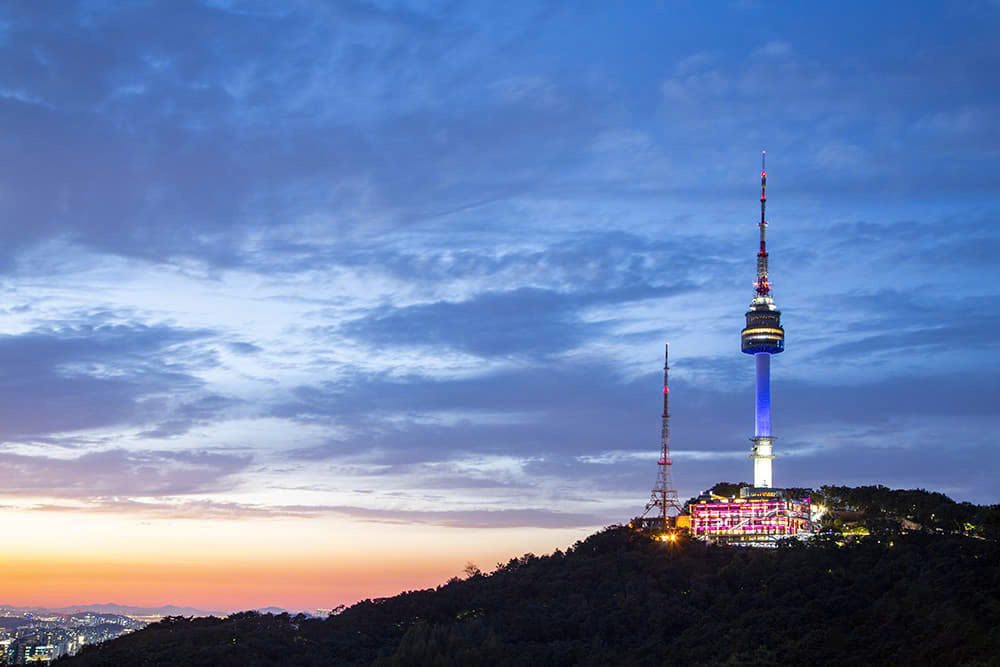
Sitting atop Namsan Mountain, the N Seoul Tower is an essential part of the city skyline and an iconic landmark. It offers the best panoramic view of the entire city, stretching to the surrounding mountains.
- Best Time of Day for Panoramic Views: Sunset is highly recommended. You get to see the city in daylight, the transition into twilight, and the incredible spectacle of Seoul lighting up after dark. The tower is also famous for its millions of “love locks” left by couples.
Hongdae & Gangnam
These two areas represent the youth culture and economic power of modern Korea. Hongdae (named after Hongik University) is an indie, artistic neighborhood filled with live street music, unique cafes, small fashion boutiques, and affordable eateries. Gangnam (made globally famous by Psy) is the affluent, luxury district known for high-end shopping, cosmetic surgery clinics, and expensive nightlife.
- Indie Vibe vs. Luxury Lifestyle: For budget travelers and fans of street performances, Hongdae is a must. For a taste of the lavish Korean high-society life, including world-class shopping centers like the COEX Mall with its famous Starfield Library, head to Gangnam.
2. Suwon Hwaseong Fortress (Gyeonggi-do)
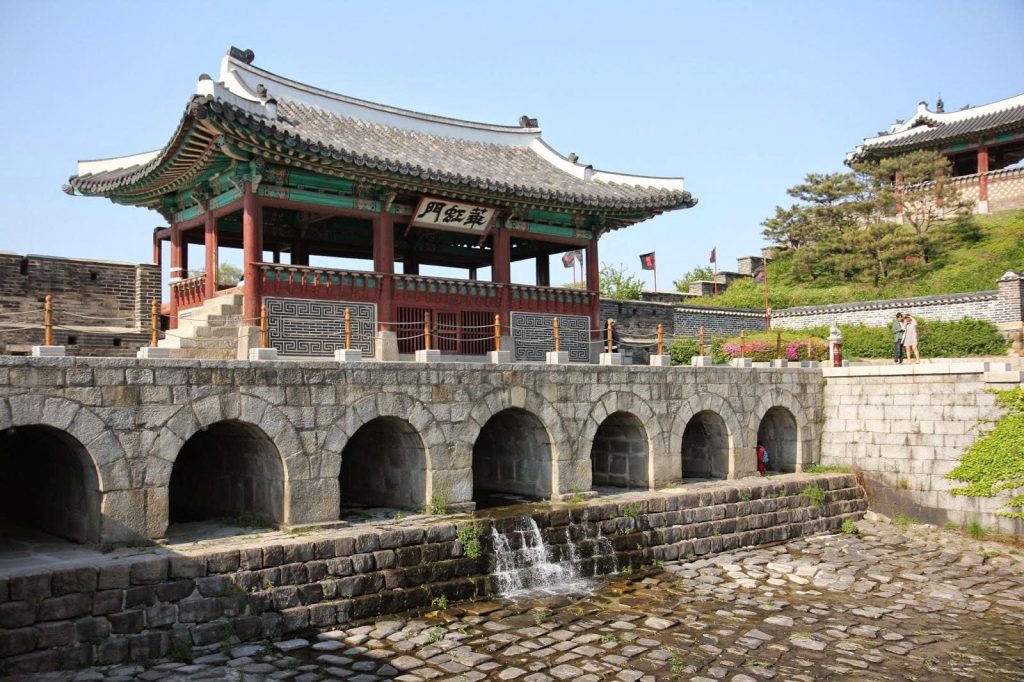
Just south of Seoul in Gyeonggi Province, Suwon is home to the magnificent Hwaseong Fortress, a complete fortress wall constructed in the late 18th century by King Jeongjo. It is recognized as a UNESCO World Heritage Site.
- Hiking the Fortress Walls and Archery Experience: The fortress walls stretch over 5.7 km. Hiking the full loop offers amazing historical insight and great exercise. You can also participate in traditional Korean archery at the Dongjangdae post.
Coastal Charm & Historical Depth – Busan & The Southeast
This region encompasses Korea’s major port city, stunning beaches, and the ancient heartland of the Silla Kingdom.
3. Busan: South Korea’s Second City
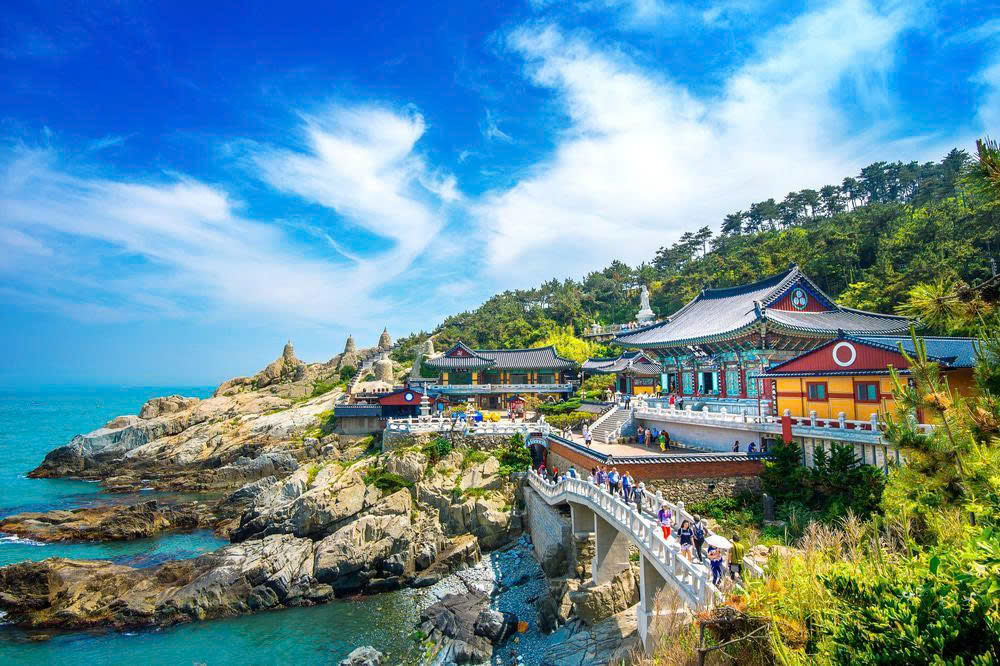
As Korea’s largest port and second-most-populous city, Busan offers a relaxed, coastal vibe that contrasts sharply with the frantic pace of Seoul.
Gamcheon Culture Village
This vibrant, tiered neighborhood is often nicknamed the “Santorini of Korea.” Originally a slum built by Korean War refugees, it was transformed into a massive, colorful public art project. The brightly painted houses cascade down the side of a steep hill overlooking the sea.
- Navigating the Village & Finding the Little Prince Statue: The village is a maze of narrow alleyways. Pick up a map at the entrance to ensure you don’t miss the key artworks, including the iconic Little Prince and the Fox statue.
Haeundae Beach & Gwangalli Beach
Busan is the center of Korean beach culture. Haeundae is the most famous, lined with luxury hotels, while Gwangalli offers a stunning night view of the illuminated Gwangan Bridge (Diamond Bridge).
- Seasonal Consideration: While Haeundae is packed during the peak summer months (July-August), the shoulder seasons offer pleasant weather for seaside strolls. Gwangalli is best enjoyed after sunset.
Haedong Yonggungsa Temple
Unlike most Korean temples nestled in the mountains, this breathtaking Buddhist temple is set right on the coast, overlooking the East Sea. The sound of the waves crashing against the rocks adds to its serene atmosphere.
- Photogenic Spots and the 108 Steps: Legend says if you descend the 108 steps near the main sanctuary, you’ll be cleansed of your worries. The temple is especially beautiful at sunrise.
4. Gyeongju: The Golden Capital
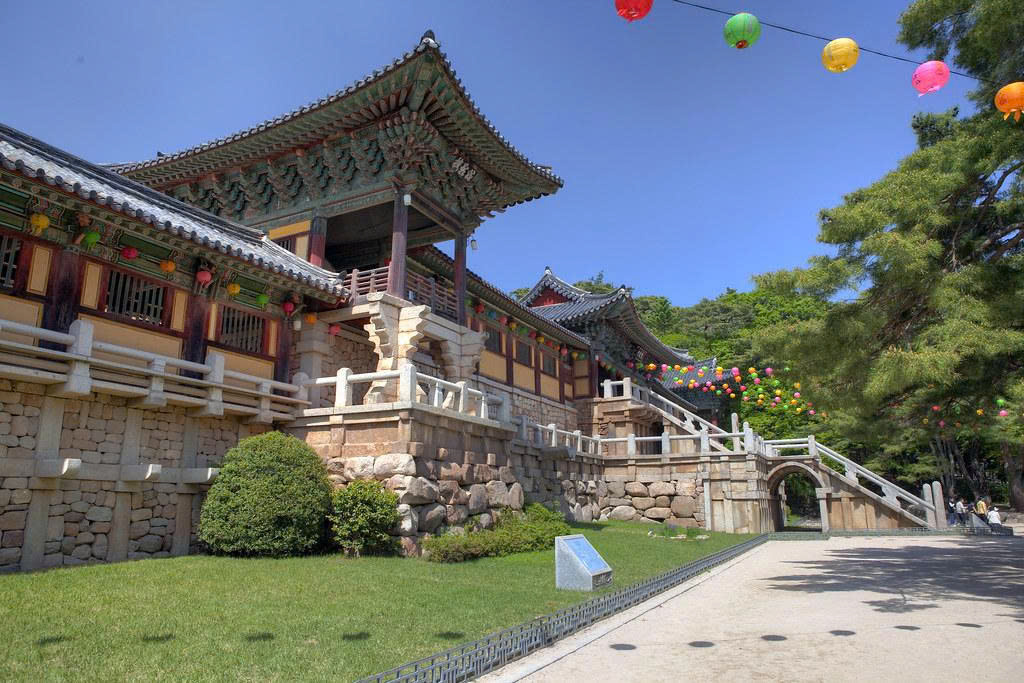
Known as the “Museum Without Walls,” Gyeongju was the capital of the ancient Silla Kingdom for almost 1,000 years. It is arguably the most history-rich city in the entire country.
Bulguksa Temple & Seokguram Grotto
These two sites are the pinnacle of Silla-era Buddhist art and architecture, both recognized as UNESCO World Heritage Sites. Bulguksa is a large, colorful temple complex, while the Seokguram Grotto houses a magnificent, serene Buddha statue carved from granite.
- Logistical Challenge: Visiting both in one day: They are located on Tohamsan Mountain. You can visit Bulguksa first and then take a short shuttle bus or taxi up to Seokguram. Reservations for Seokguram are sometimes recommended, depending on the season.
Tumuli Park & Cheomseongdae Observatory
Tumuli Park is instantly recognizable for its large, grassy royal burial mounds, which house the remains of Silla rulers. The nearby Cheomseongdae is the oldest surviving astronomical observatory in East Asia.
- Nighttime Illumination and Historical Significance: The area around Cheomseongdae and the Donggung Palace and Wolji Pond is stunningly illuminated after dark, offering magical photo opportunities and a palpable connection to history.
Natural Wonders & Adventure – Jeju & Mountains
South Korea’s rugged topography offers incredible outdoor adventures, most notably on its volcanic island and in its national parks.
5. Jeju Island: The Volcanic Paradise
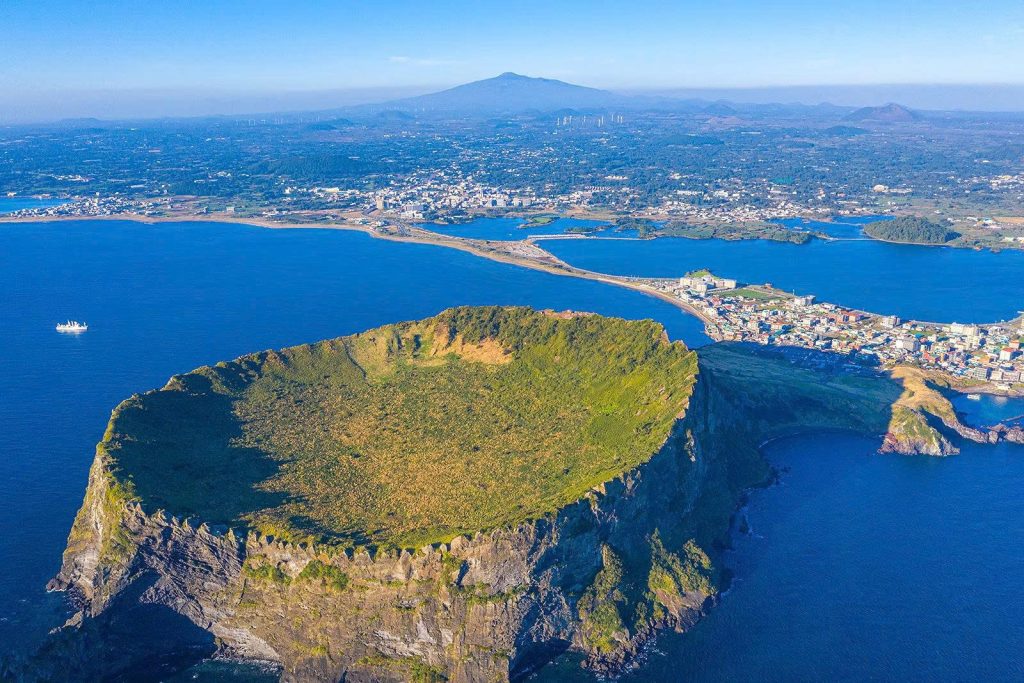
Jeju, often called the “Hawaii of Korea,” is a crescent-shaped volcanic island designated a UNESCO World Natural Heritage Site due to its unique geological formations. It is the top domestic vacation spot.
Hallasan National Park
Home to Mount Hallasan, the country’s highest peak, the national park is centered around a dormant shield volcano. Hiking here is a rewarding challenge for nature lovers.
- Trail Difficulty and Permit Requirements: The hike to the summit of Baengnokdam Crater Lake is strenuous and requires advance reservation/permit on certain trails (e.g., Seongpanak and Gwanseumsa) during peak seasons—a critical piece of Expertise for trip planning.
Seongsan Ilchulbong (Sunrise Peak)
This stunning, bowl-shaped volcanic crater rises dramatically from the sea on the eastern side of Jeju. It’s an iconic sunrise spot and a relatively easy climb.
- The Famous Haenyeo (Female Divers) Performance: Below the peak, you can often witness the performance of the Haenyeo (sea women), elderly female divers who harvest seafood without oxygen masks—a remarkable sight and a cultural icon unique to Jeju.
Manjanggul Lava Tube
Part of the Geomunoreum Lava Tube System, this is one of the longest and finest lava tunnels in the world. Visitors can walk about 1 km into the vast cavern.
- Preparing for the Cold, Damp Environment: Even in summer, the tunnel temperature hovers around (). Wear comfortable, non-slip shoes and consider a light jacket.
6. Seoraksan National Park
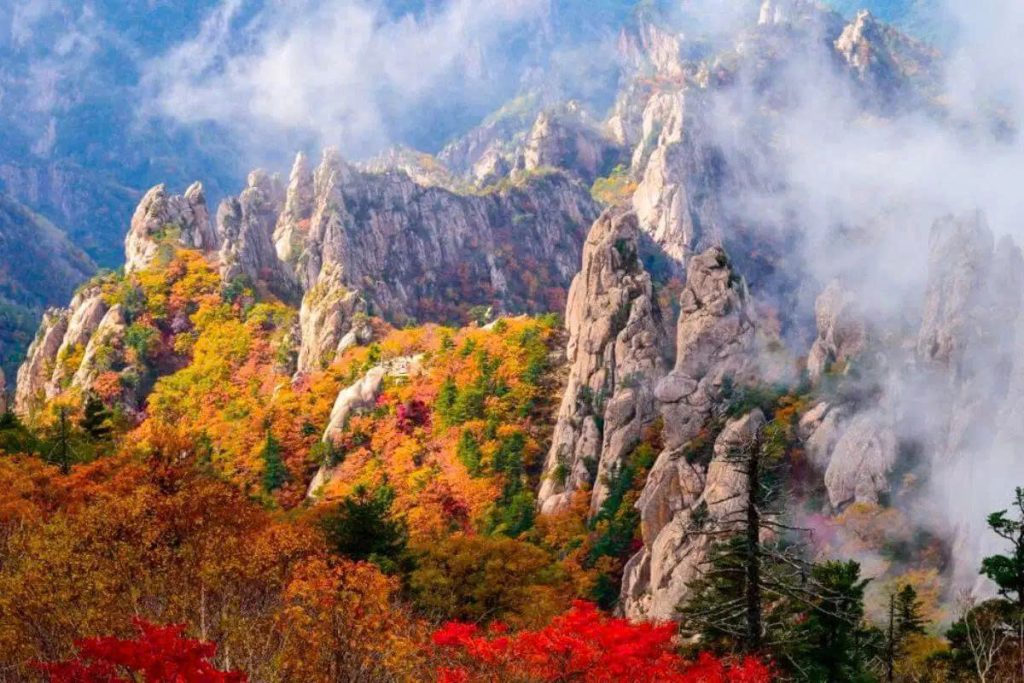
Located in the Taebaek Mountain range on the east coast, Seoraksan is one of Korea’s most beautiful and celebrated national parks, famous for its magnificent granite peaks, deep valleys, and brilliant autumn foliage.
Ulsanbawi Rock Hike
The towering six granite peaks of Ulsanbawi are an iconic image of the park. The hike is challenging, involving over 800 metal steps near the top, but the panoramic views are worth the effort.
- Cable Car Option vs. The Challenging Hike: For those with limited time or mobility, a cable car ride near the entrance takes you up to Gwongeumseong Fortress, offering superb views without the intense 4-hour climb to Ulsanbawi.
Cultural & Unique Experiences – The DMZ & Jeonju
This section covers places that offer profound historical, political, or cultural immersion, showcasing the depth of Korea beyond the typical tourist route.
7. The Korean Demilitarized Zone (DMZ)
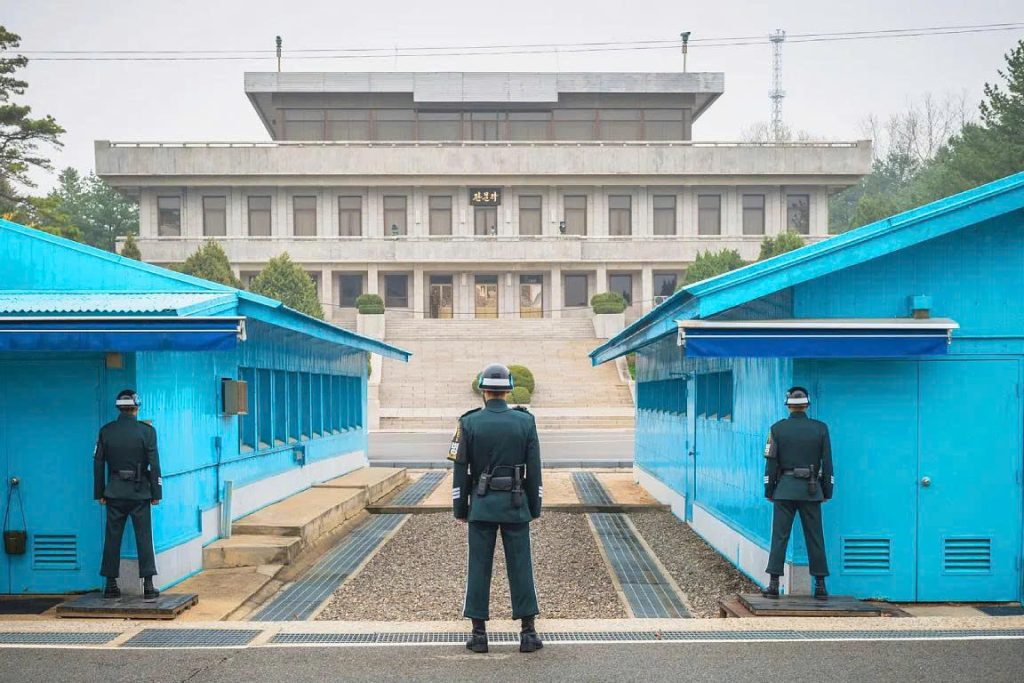
This 250 km long, 4 km wide strip of land separating North and South Korea is the world’s most heavily guarded border. Visiting the DMZ is a solemn, unique experience that engages directly with modern history.
Third Tunnel of Aggression & Joint Security Area (JSA)
The Third Tunnel is one of four known tunnels dug by North Korea under the DMZ. The JSA (or Panmunjom) is the only place where North and South Korean soldiers stand face-to-face.
- Tour Requirements and Security Protocol: Due to the political sensitivity, a DMZ tour must be booked through an authorized agency. The JSA (Blue Buildings) requires signing a liability waiver and has a strict dress code (no ripped jeans or open-toed shoes).
8. Jeonju Hanok Village
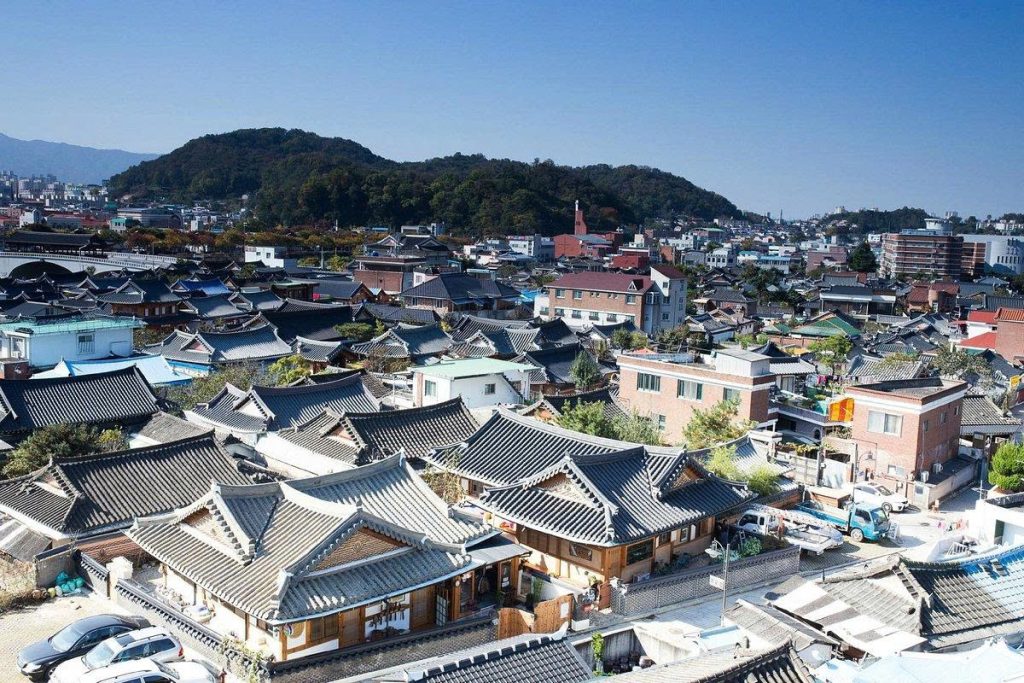
Located in the southwest, Jeonju is a treasure trove of Korean heritage. Its Hanok Village is significantly larger and generally quieter than Bukchon in Seoul. It’s also recognized as a UNESCO City of Gastronomy.
The Birthplace of Bibimbap
Jeonju is famously considered the originator of Bibimbap (mixed rice with meat and vegetables). The city offers countless traditional restaurants that serve the dish with special flair, often including bean sprouts grown in pure water.
- Recommended Local Eateries for Authentic Bibimbap: Look for long-standing establishments like Gajok Hoegwan or Han Kuk-kwan to ensure you taste the most authentic version of this national dish.
9. Andong Hahoe Folk Village
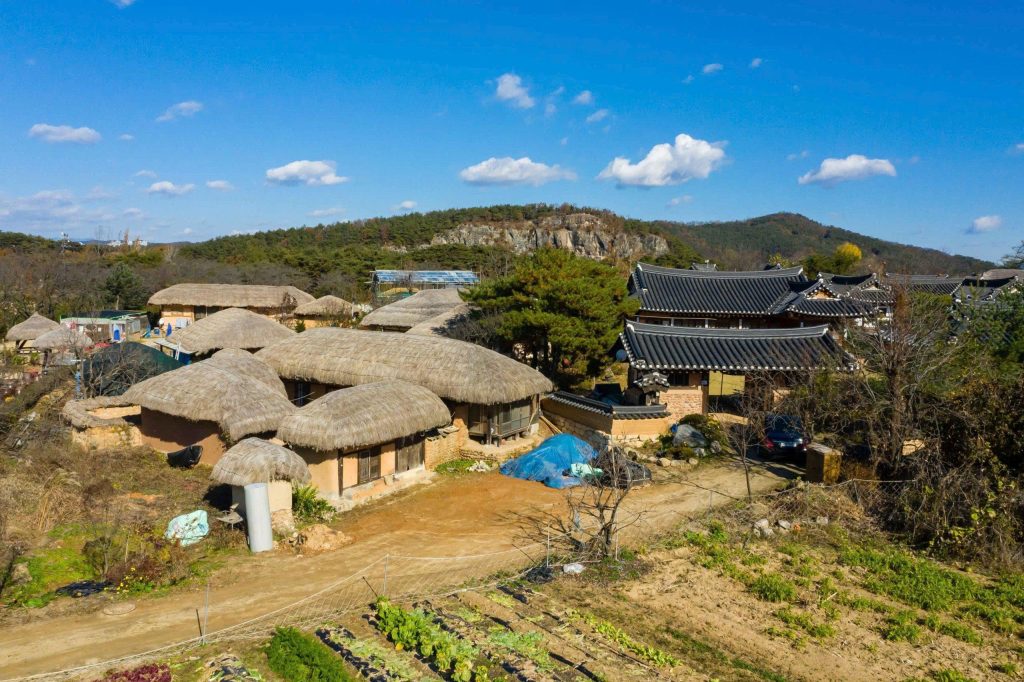
This traditional Korean village near Andong preserves the architectural style and social customs of the Joseon Dynasty. It is situated along the Nakdong River and is another UNESCO World Heritage Site.
- Mask Dance Performances and Confucian Culture: Andong is considered the center of Korea’s Confucian culture. The village is known for its traditional Byeolsin굿 Mask Dance, a unique form of folk theater that satirizes the upper classes.
10. Dadohaehaesang National Park (The Sea of 10,000 Islands)
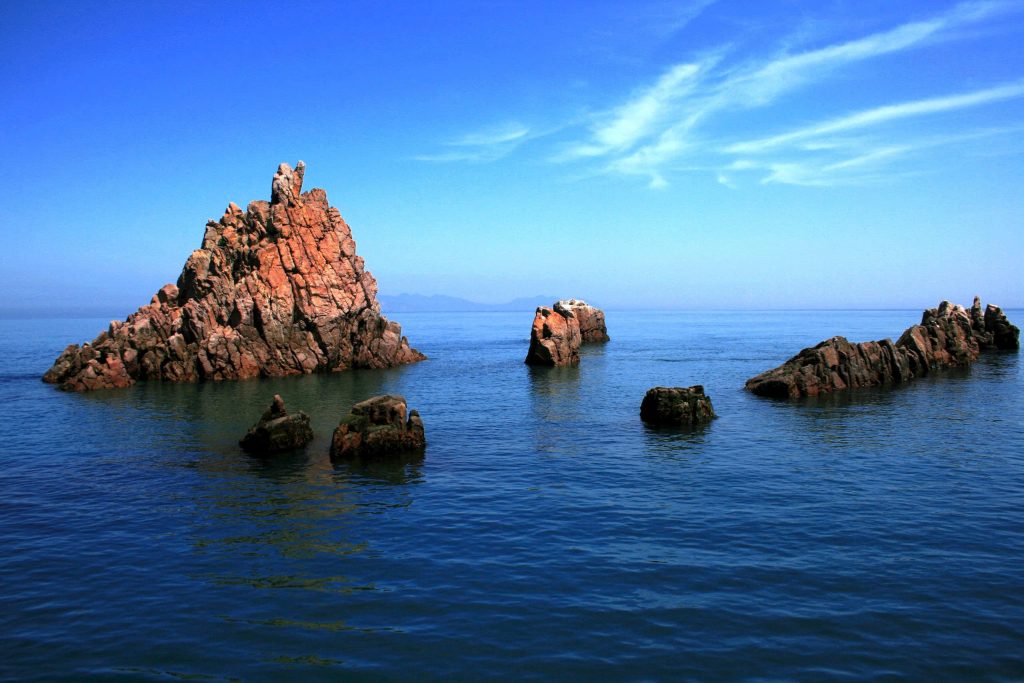
Located off the southwest coast, this is Korea’s largest national park, encompassing over 1,700 islands. It’s perfect for travelers seeking tranquility and pristine coastal scenery.
- Key Islands to Visit: Focus on the two most accessible and popular groups: Hongdo (known for its red-hued rocks and cliffs) and Heuksando. Traveling here requires careful ferry planning.
Specialized Destinations & Modern Wonders
Rounding out the list are locations that cater to specific interests, from theme parks to winter sports.
11. Everland Resort (Yongin, Gyeonggi-do)
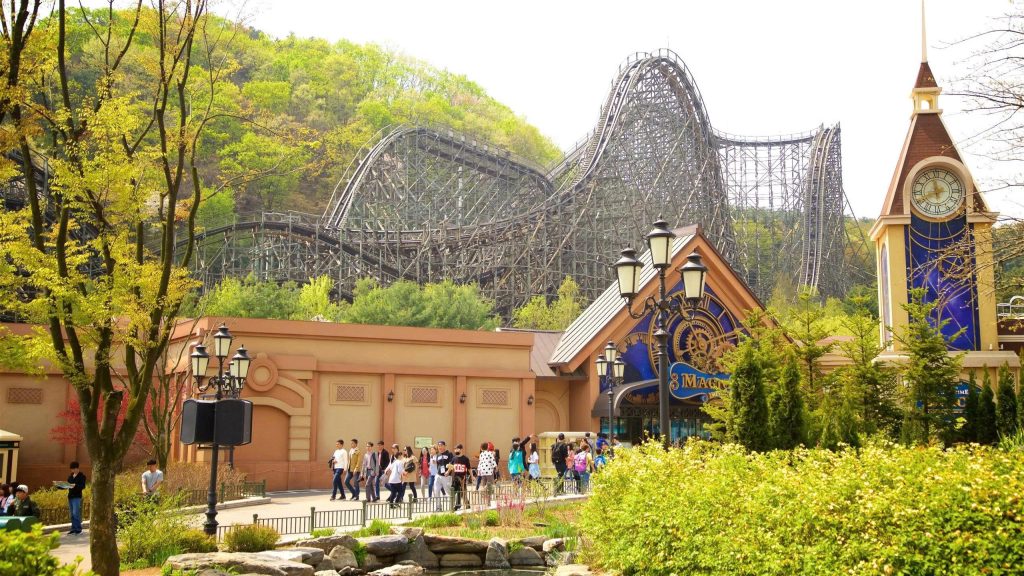
South Korea’s largest and most popular theme park, Everland is famous for its massive floral gardens and the world’s steepest wooden roller coaster, the T-Express. It is a major Entity for family and youth tourism.
- Best Times to Avoid Crowds: Weekdays, especially outside of school holidays, are recommended to minimize wait times.
12. Pyeongchang County
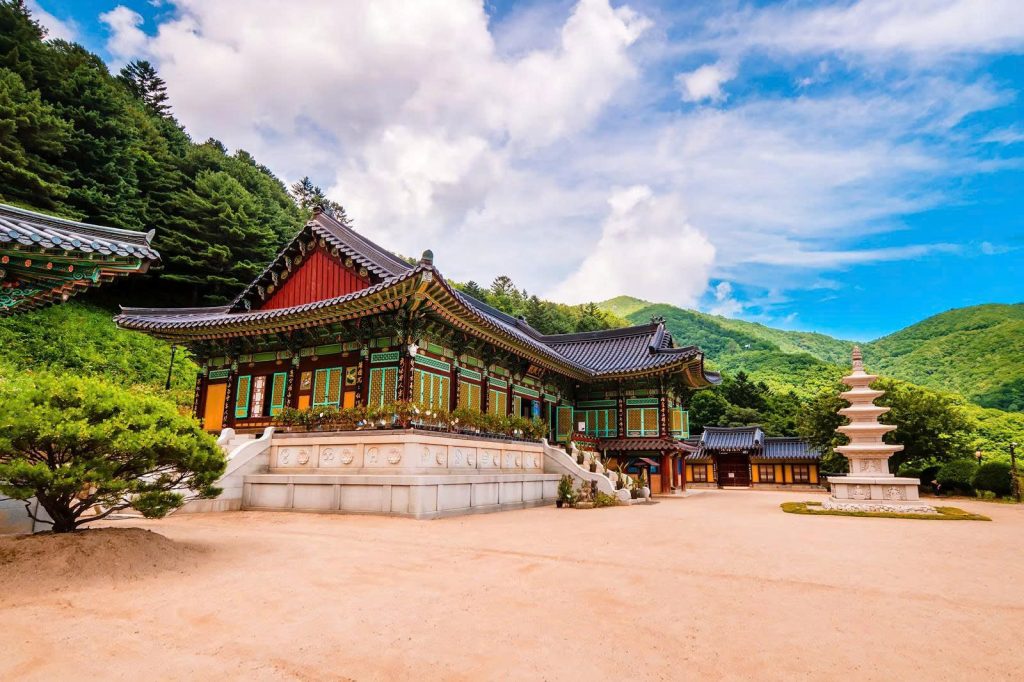
Famous for hosting the 2018 Winter Olympics, Pyeongchang is the mountainous heart of Gangwon Province. It is a paradise for hikers in summer and skiers in winter.
- Winter Sports and Buddhist History: Visit the Alpensia Resort for skiing or the ancient Woljeongsa Temple, located in a tranquil forest and offering peaceful temple-stay programs.
13. Cheonggyecheon Stream (Seoul)
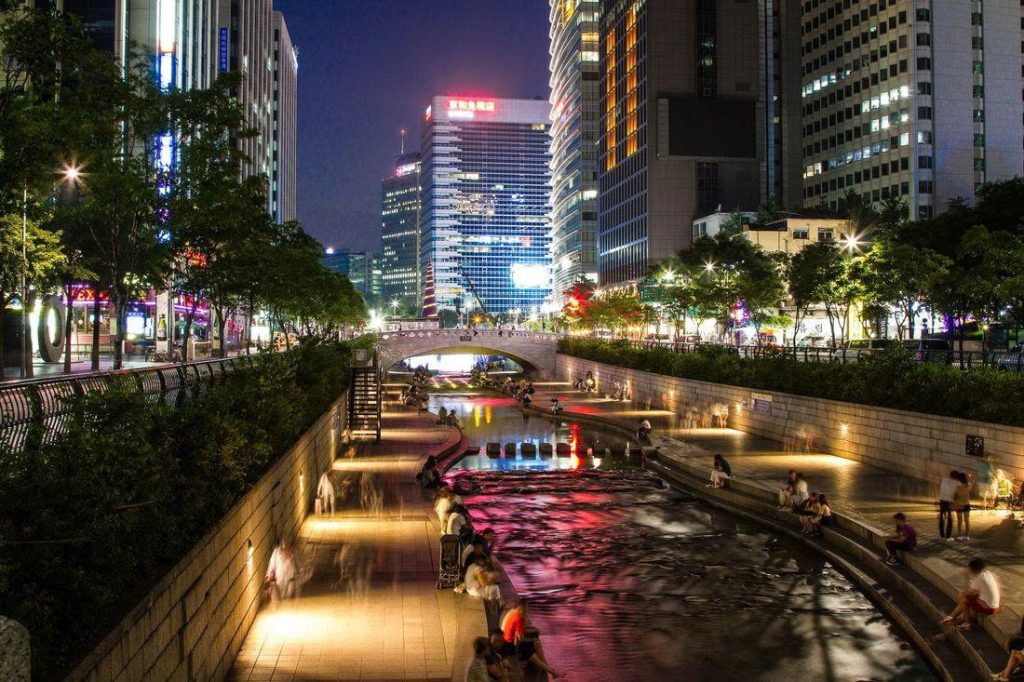
This 11 km long stream runs through the heart of downtown Seoul. It was once paved over with a freeway but was controversially restored, becoming a beloved urban green space and a symbol of environmental restoration.
- Relaxation in the City: The stream is a perfect place for a midday stroll or to relax near the numerous artistic installations. It is also the site of the spectacular Seoul Lantern Festival every November.
14. Boseong Green Tea Fields (Jeollanam-do)
The stunning, terraced tea plantations of Boseong are some of the most beautiful agricultural landscapes in Asia. The fields create mesmerizing patterns across the hillsides, making them an incredible sight for photography.
- Tasting and Exploring: You can tour the Daehan Dawon fields, purchase local tea and tea-flavored products, and enjoy the distinct, calming atmosphere.
15. The National Museum of Korea (Seoul)
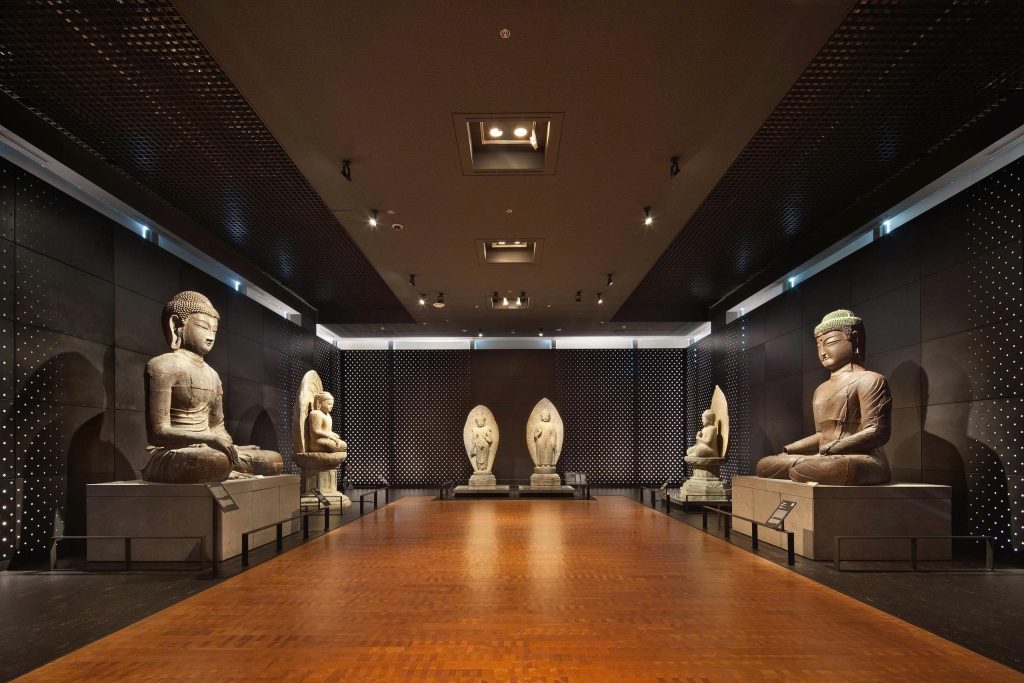
To truly appreciate the destinations listed above, a visit to this museum is essential. Located in Yongsan, it is the premier museum dedicated to Korean history and art, housing an astonishing collection that spans prehistoric times to the Joseon Dynasty.
- Must-See: Prioritize the Silla gold crowns from Gyeongju and the Buddhist relics from various temples to gain deeper historical context before or during your trip.
Travel Tips for South Korea
Meeting the E-A-T standard requires providing factual, helpful, and experienced-based logistical advice.
Best Time to Visit
- The Consensus: The best times to visit are during Spring (April-May) and Autumn (September-October) due to mild temperatures and spectacular scenery (cherry blossoms or autumn foliage).
- Key Considerations: Avoid the monsoon season (July-early August). Be aware that local holidays like Chuseok (Thanksgiving) and Seollal (Lunar New Year) can cause travel chaos and close major shops/restaurants.
Getting Around
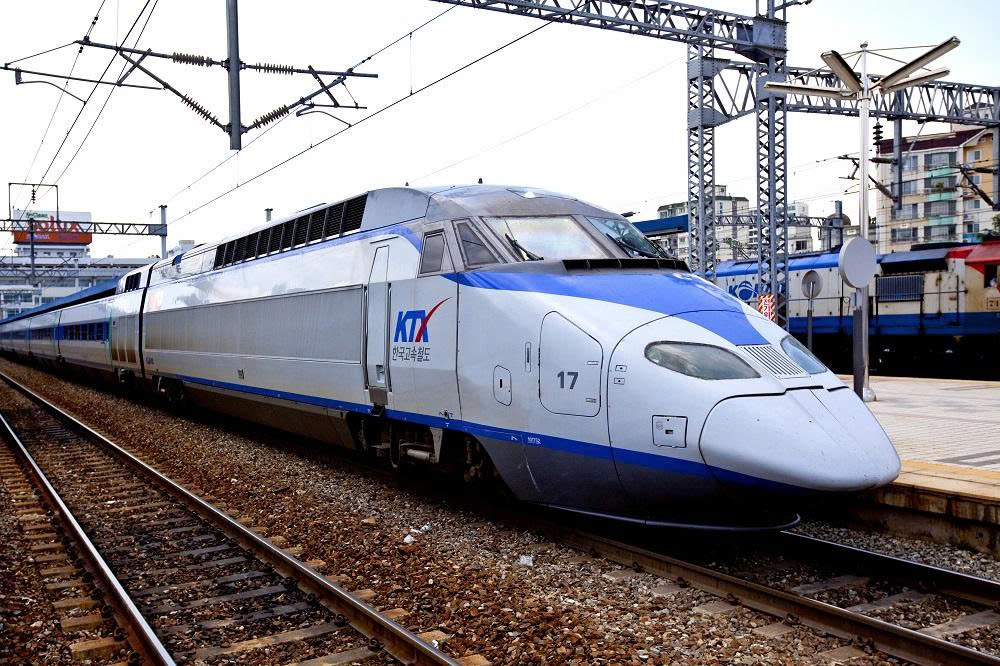
- High-Speed Rail: The KTX (Korea Train eXpress) network is incredibly efficient and is the best way to travel between major cities (Seoul to Busan is less than 3 hours). The Korea Rail Pass (KR PASS) is an excellent investment for foreign travelers planning multiple train journeys.
- City Transit: Seoul and Busan boast world-class, easy-to-navigate subway systems. Purchase a rechargeable T-Money card immediately upon arrival.
Technology Essentials
- Navigation: While Google Maps is limited in South Korea, the local apps Naver Map and KakaoMap are accurate and essential for driving and public transit directions.
- Connectivity: South Korea has some of the world’s fastest internet. Renting a portable WiFi Egg at the airport is often the most cost-effective solution for groups.
Money Matters & Tipping Culture
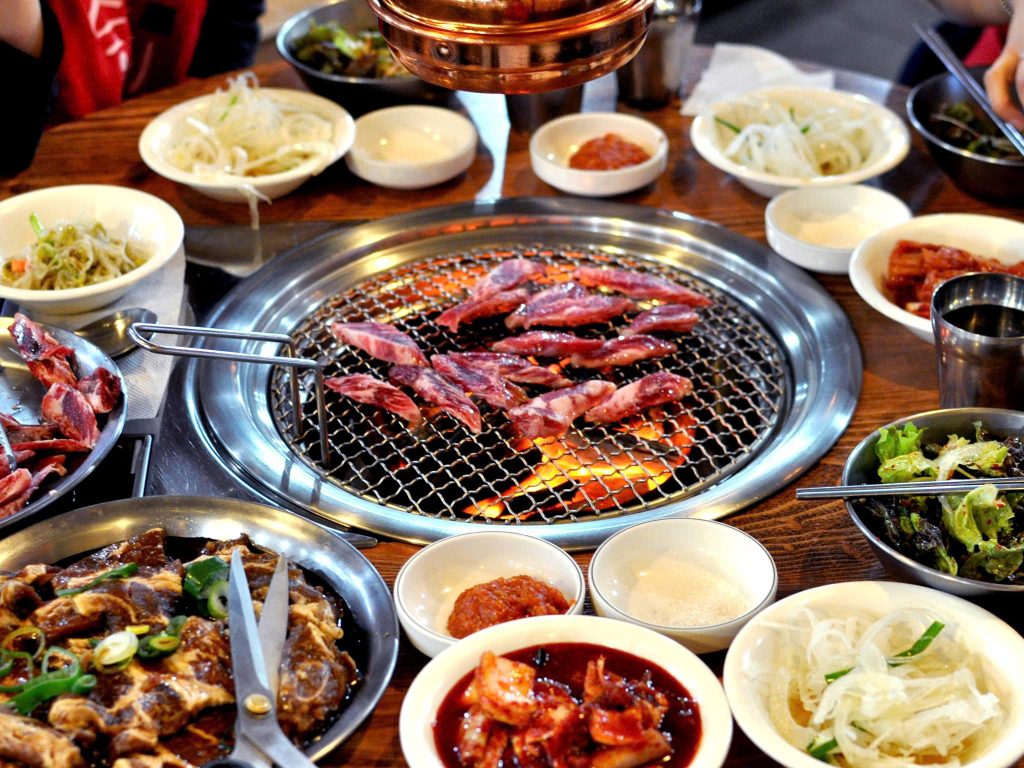
- Currency: The official currency is the Korean Won (KRW). Credit cards (especially Visa and MasterCard) are accepted almost everywhere, even at street food stalls.
- Tipping: Tipping is generally not expected in South Korea, including at restaurants, bars, and for taxi drivers. Attempting to tip can sometimes cause confusion.
RELATED: South Korea Travel Guide 2026: Visa, Costs, and Tips
South Korea is an endlessly fascinating travel destination that delivers on its promises of vibrant culture, deep history, and breathtaking natural beauty. Whether you’re standing in awe of the ancient Silla mounds in Gyeongju, exploring the futuristic landscape of Gangnam, or hiking the peaks of Hallasan, the country will leave a lasting impression.


